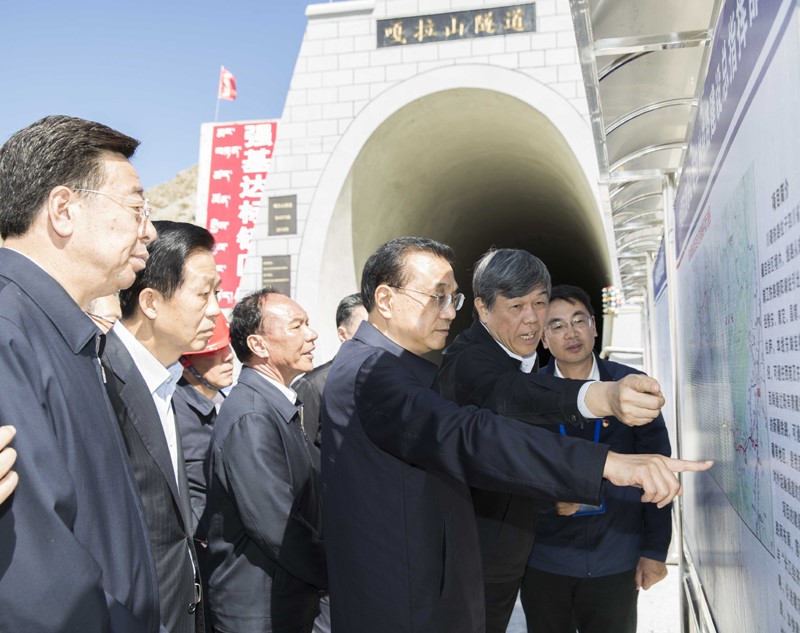The Sichuan-Tibet Railway is located in Sichuan province of China and the Tibet Autonomous Region. It starts from Chengdu of Sichuan province in the east, passes Ya'an, Kangting, Qamdo, Nyingchi, and Shannan to the west, and finally reaches Lhasa in the Tibet Autonomous Region. The east end connects the Chengdu hub, and the western end passes the existing Qinghai-Tibet Railway and the planned new Tibet Railway running to the northwest China, Xinjiang and other regions. The Sichuan-Tibet Railway is an important part of the Shanghai-Lhasa Railway Corridor, and is also the main channel for external transportation of the Tibet Autonomous Region. The newly- built main line of the Sichuan-Tibet Railway is approximately 1514km long and the designed speed is 200km per hour; The section mode is adopted in the construction. Among them, the Chengdu to Ya'an City section and the Lhasa to Nyingchi section have been constructed. The total length of the Ya'an to Nyingchi section is about 970km.
The project is located in the southeastern part of the Qinghai- Tibet Plateau, and passes through five geomorphic units including the Sichuan Basin, the western Sichuan alpine canyon area, the western Sichuan mountain area (alpine area), the southeast Tibet Hengduan mountains and alpine canyon area, and the southern Tibet valley area, successively crossing even major rivers, including the Dadu River, the Yalong River, the Jinsha River, the Lancang River, the Nu River, the Purlung Tsangpo River, the Yarlung Tsangpo River, crossing eight mountains, including Erlang Mountain, Zheduo Mountain, Gaoer Temple Mountain, Shaluli Mountain, Mangkang Mountain, Taninthawong Mountain, Beshula Ridge and Sejila Mountain. The characteristics of this engineering project are the "significant terrain height difference, strong plate activity, frequent mountain disasters, fragile ecological environment". There are many complex structural bridges and super-long and deep-buried tunnels along the line. The bridge-to- tunnel ratio is over 90 percent. It is the most complicated and dangerous railway project in China and even in the mountainous regions all over the world. The design and construction of railway projects face world- class problems.
On July 26, 2018, Premier Li Keqiang made important instructions: "After the completion of the Sichuan-Tibet Railway, it will become another major artery from the roof of the world to the mainland after the Qinghai-Tibet Railway. Development and construction and ecological protection are of great significance. It is not only the expectations of the Tibetan people, but also the aspirations of the people across the country. It requires a great responsibility and it is a glorious mission. ", when he visited the construction site of the Sichuan-Tibet Railway from Lhasa to Nyingchi.
On October 10, 2018, General Secretary Xi Jinping hosted the third meeting of the Central Finance and Economic Committee to fully launch the planning and construction of the Sichuan-Tibet Railway. The meeting emphasized that "Planning and building the Sichuan-Tibet Railway is to promote national unity, maintain national unity, and consolidate border stability. It is the need to promote the economic and social development of Tibet, and it is a major measure to implement the Party's central government strategy for Tibet. We must grasp the overall idea of 'scientific planning, technical support, ecological protection, safety and reliability', strengthen unified leadership, and strengthen the project in the preliminary work, we will strengthen the guarantee of construction and operating funds, carry forward the spirit of the 'Two Roads' and the Qinghai-Tibet Railway, and promote the planning and construction of the project with a high starting point, high standards, and high quality. ".
